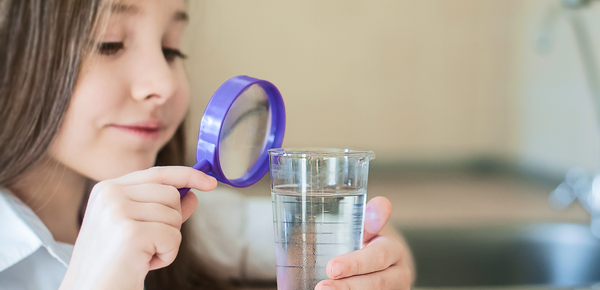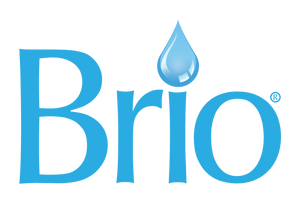There’s nothing more refreshing than a crisp, cold glass of water. Or a long, hot shower at the end of a hard day. But picture this. Floating around inside your tap water are contaminants that are invisible to the naked eye, are virtually indestructible, are almost impossible to avoid, and pose serious health threats.
They are per- and polyfluoroalkyl substances (PFAS), or “forever chemicals”. They’re so deadly that in April 2024, the Environmental Protection Agency (EPA) issued the first-ever national, legally enforceable drinking water standard to protect communities from exposure to harmful PFAS, highlighting the pressing need for water filtration systems that can effectively combat these contaminants.
If you’re concerned about the quality of your tap water, particularly in light of the new stringent standards, it’s crucial to explore effective filtration solutions. Here we walk you through how reverse osmosis is the best way to tackle the modern day scourge that is PFAS pollution.

What is PFAS in tap water?
PFAS were discovered by chance in 1938 by a chemist working for DuPont. Initially hailed for their remarkable properties, PFAS were valued for their resistance to heat, water, and oil. These characteristics led to their widespread use in various industries, from non-stick cookware and water-repellent clothing to firefighting foams and stain-resistant fabrics. The durability and effectiveness of PFAS made them an attractive choice for manufacturers, leading to their incorporation into countless consumer products and industrial applications.
Here’s the kicker. In the 1940s, three scientists died in DuPont’s organic chemicals section after being exposed to PFAS-containing chemicals. The incident served as early signs of PFAS’ possible dangers, but it was only in the 1990s that the Environmental Protection Agency was alerted to their toxicity.
Now, we’re well aware of how PFAS seep insidiously into our homes, our drinking water, soil and the food we eat – and therefore into our bodies. Forever chemicals have gained notoriety due to their persistent nature and potential health impacts, and exposure to PFAS has been linked to cancer, reproductive issues, and immune system disruptions.
What are the new EPA PFAS limits?

In April 2024, the EPA issued the first-ever national, legally enforceable drinking water standard to protect communities from exposure to harmful PFAS. The final rule will reduce PFAS exposure for around 100 million people, prevent thousands of deaths, and reduce tens of thousands of serious illnesses, underscoring the urgency of addressing this contamination in our drinking water.
To wrap your mind around what one part per trillion is, it’s the equivalent of a half a drop of iodine dropped into an Olympic-sized swimming pool.
PFAS chemicals tap water: what happens now?
Historically, the EPA had only tightened advisory levels of PFAS in tap water. Note the word ‘advisory’. Before the recent standards, PFAS were still unregulated chemicals, and there was no law in place to keep them out of drinking water.
Now, things are changing, but the process will take time for municipalities to implement. The EPA estimates that between about 6% and 10% of the 66,000 public drinking water systems subject to this rule may have to take action to reduce PFAS to meet these new standards.
In Texas, for example, 49 public water utility systems have reported surpassing the EPA’s first-ever limits for five forever chemicals in drinking water. Experts say there are likely more since not all water systems have submitted their data.
All public water systems have three years to complete their initial monitoring for these chemicals, and must inform the public of the level of PFAS measured in their drinking water. Where PFAS is found at levels that exceed these standards, systems must implement solutions to reduce PFAS in their drinking water within five years.
Until then, you’ll want to keep PFAS out of your drinking water.
How do I know if I have PFAS in my water?

You won’t know by your water’s taste, smell, or appearance. You’ll need to contact your state to find certified laboratories that will test for it. California provides a GIS map for locating environmental laboratories that have been accredited by the state.

It's also a good idea to get a copy of your municipality’s water quality report. These annual Consumer Confidence Reports (CCRs), which the EPA requires by law, offer information about the quality of your water. If you’re worried about PFAS, and don’t see them listed in the report, contact your municipal water district, and ask how or if the issue is being addressed.
Certain states are more heavily impacted by PFAS contamination than others. The Environmental Working Group (EWG) has an interactive map that indicates the PFAS sites throughout the United States that they’ve identified. The map will also tell you the total amount of PFAS found, and the years in which the area was tested by the EWG.

Are there water filters that remove PFAS?
The new limits set by this rule can be met using various technologies like granular activated carbon and reverse osmosis.
After the Cape Fear River revelations in 2017, Duke University and North Carolina State University researchers teamed up to test which type of filtration was most effective at removing PFAS from water. They tested 76 different filtration systems, including refrigerator filters, pitcher filters, undersink reverse osmosis systems, and whole house filtration systems.
The results indicated that the undersink reverse osmosis filtration systems they tested reduced the presence of PFAS and GenX by 94% or more.
The study noted that activated carbon filters used in pitcher, countertop, refrigerator, and faucet-mounted styles were ‘inconsistent and unpredictable’ in removing PFAS. Results for whole house systems also showed varied results as well and, in some instances, PFAS levels actually increased. There are some pitchers that are now certified to reduce PFAS, but it’s unclear how long the filters in these pitchers last. To learn more, read Do Water Pitchers Remove Contaminants?
Why choose reverse osmosis water filtration systems?

Reverse osmosis systems use a semi-permeable membrane to filter out contaminants, including PFAS, providing a comprehensive solution for cleaner drinking water. Unlike other filtration methods, such as activated carbon filters, reverse osmosis consistently delivers outstanding results in reducing PFAS and other harmful substances.
Your local water municipality is working as hard as it can to keep your water safe, but providing your home with a water filtration backup system is a good idea, especially when it comes to contaminants as insidious as forever chemicals.
Don’t compromise on your family’s health.
Ensure your water is free from PFAS and other harmful chemicals with Brio’s innovative water solutions.
Undersink reverse osmosis filtration systems

For reliable PFAS filtration, Brio offers cutting-edge undersink reverse osmosis filtration systems designed to meet stringent water quality needs. These systems feature:
- multiple filtration stages, ensuring that PFAS and other contaminants are significantly reduced before reaching your glass
- a dedicated faucet for dispensing and premium filter cartridges, Brio's RO systems prioritize performance and convenience.
- peace of mind
Bottled water coolers

Or, you can opt for a value-packed bottled water cooler. The International Bottled Water Association (IBWA), of which Brio is a member, fully supports the EPA’s action to regulate six PFAS substances in tap water to protect public health and further strengthen the reliability of public water systems.
While not currently mandated by the U.S. Food and Drug Administration (FDA), since 2019, the IBWA has required its members to test and comply with standards of quality for 18 PFAS substances in all the products they sell. Federal law requires FDA bottled water regulations to be as protective of public health as EPA standards for tap water.
As awareness grows about the risks associated with PFAS contamination, it’s essential to prioritize water quality solutions that deliver results. Reverse osmosis systems stand out as the gold standard for removing PFAS from drinking water, offering a reliable and effective defense against these persistent chemicals. Choose Brio’s undersink RO systems to safeguard your home’s water supply and enjoy cleaner, healthier drinking water every day.




